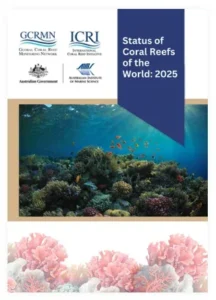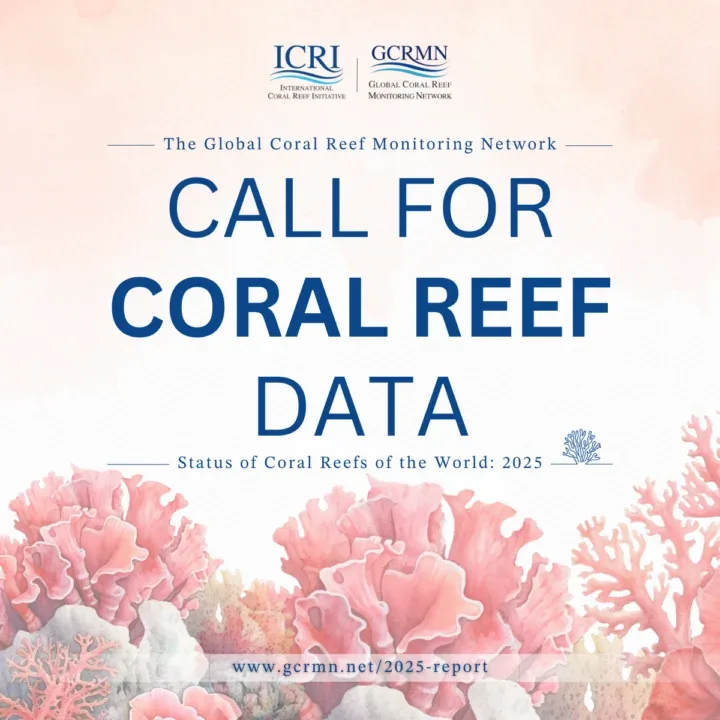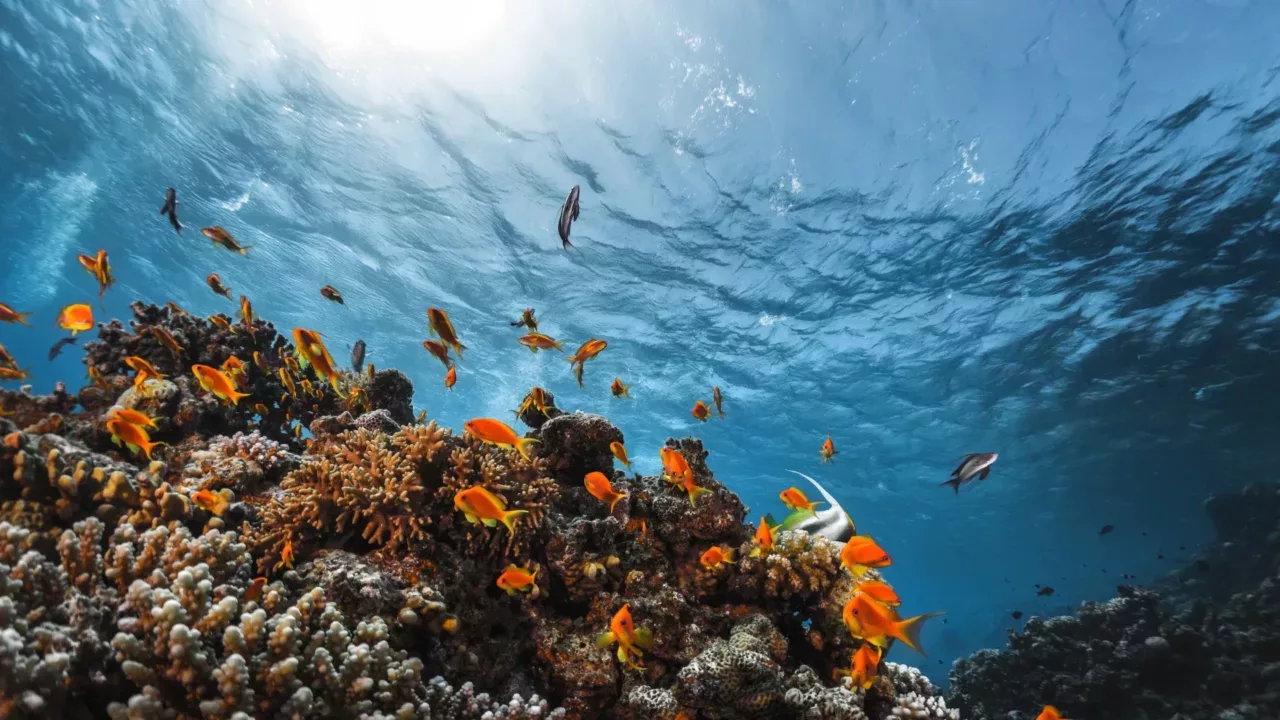 The GCRMN Global Team have launched a call for coral reef monitoring data for the preparation of the next global report; the Status of Coral Reefs of the World: 2025.
The GCRMN Global Team have launched a call for coral reef monitoring data for the preparation of the next global report; the Status of Coral Reefs of the World: 2025.
The GCRMN was established by ICRI in 1995 to monitor the condition of the world’s coral reefs. The GCRMN has published an extensive range of global, regional, and thematic reports on coral reef status and trends. The GCRMN collates and presents coral reef data, aggregating from national to regional levels, and then to a global level.
The flagship products of the GCRMN are the “Status of Coral Reefs of the World” reports, supplemented by topical reports developed upon request of the global community and ICRI, and regional reports highlighting the status and trends of coral reefs across the network’s 10 regions. Since 1995, six “Status of Coral Reefs of the World” global reports have been published by the network at large. The sixth edition of the GCRMN “Status of Coral Reefs of the World” report released in 2021, was the first since 2008, and the first based on the quantitative analysis of a global dataset compiled from raw monitoring data contributed by more than 300 members of the network.
Given the urgency to conserve coral reefs and the commitments made by countries to 2030, the GCRMN is calling for coral reef monitoring data contributions for the development of its seventh “Status of Coral Reefs of the World” global report which will be released in 2026.
The report will describe the temporal trends of hard coral and algal cover (ideally at the resolution of macro algae, turf algae, and coralline algae) at the global level, providing an update of the “Status of Coral Reefs of the World: 2020” report.
GCRMN reports are focused on widely collected indicators that represent the status of coral reefs. For the “Status of Coral Reefs of the World: 2025” global report, monitoring data on percentage cover of benthic organisms is being requested. These data can be from consistent, long-term temporal monitoring programs or from one-off spatial surveys (i.e., a single survey in time). Ideally, the GCRMN is looking for the finest spatial level and the finest taxonomic level alongside metadata associated with the data to contextualise and interpret the data.
If you have data that you wish to contribute, a dedicated webpage has been established on the GCRMN website to provide more information on the data contribution and report production process including a “Guide to Data Contributors” and “Data Sharing Agreement” – both available in English, French, Spanish and Portuguese.

